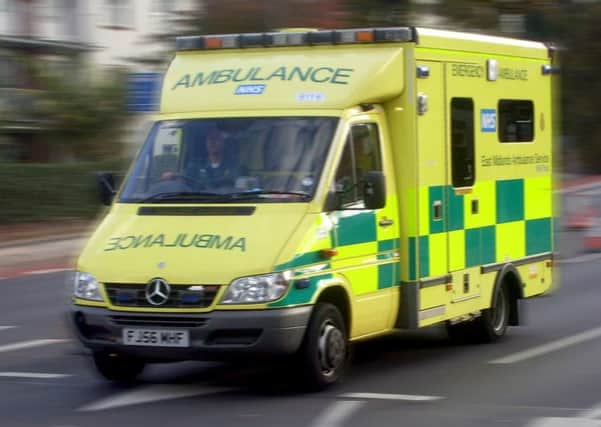Key response targets missed by ambulances


The local South East Coast Ambulance Service not only missed the operating target of responding to 75 percent of emergency calls within eight minutes but was also one of only two ambulance services in the country that failed to hit the response target of 95 percent in 19 minutes.
The news follows the closure of ambulance stations in both Rye and Battle with crews signing on to work at Hastings.
Advertisement
Hide AdAdvertisement
Hide AdThe figures cover May this year. It was the first time since December 2013 that the Red 1 standard has been missed.
The situation has been highlighted by the Rural Services Network who are concerned about response times in isolated rural areas.
A South East Coast Ambulance Service NHS Foundation Trust (SECAmb) spokesperson said: “The changes we have introduced across our region with our Make Ready Centres are to ensure our staff are in the best place to respond to patient demand and to ensure our vehicles are well maintained, cleaned and restocked by specialist staff rather than paramedics who in turn are able to spend more time doing the job they are trained to do – treating patients.
“Changes in the Hastings area have seen us retain both our Rye and Battle locations as Ambulance Community Response Posts, therefore protecting the service we provide to the local community.
Advertisement
Hide AdAdvertisement
Hide Ad“SECAmb recognises the importance of responding quickly to patients and our staff are working extremely hard to meet year-on-year increases in demand.
“May 2014 saw a further significant increase in our activity above our expected and planned for levels.
“This of course makes meeting response times more challenging.
“The Trust has also noticed that there has been a shift in when patients are calling with more people now calling during the evenings and weekends.
Advertisement
Hide AdAdvertisement
Hide Ad“ Short term approaches to address these issues include increasing the number of resources through the use of voluntary and other external providers while also progressing with our plans to recruit additional staff.
“Despite this increase in demand, our average response time in May for these most serious and life-threatening calls across our Sussex, Surrey and Kent region was approximately 6 minutes and 40 seconds.
“While response times are important it is equally important to ensure that when ambulance crews arrive they are making a difference.
“This is why greater focus is now being placed on measuring patient outcomes. SECAmb has been calling for clinical outcomes to be the measure of success for a number of years.
Advertisement
Hide AdAdvertisement
Hide Ad“Along with all parts of the NHS, SECAmb continues to be extremely busy. In May of this year alone we received more than 75,000 calls and in the whole of 2013/14 we received well in excess of 850,000 calls.
“Our dedicated and highly-skilled staff are working very hard to meet this additional demand and SECAmb is committed to ensuring patients across our region receive the service and care they expect and deserve.”